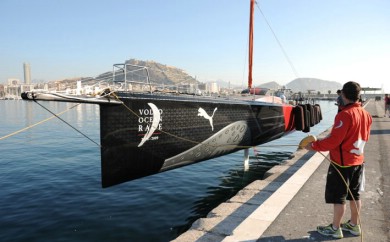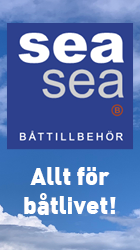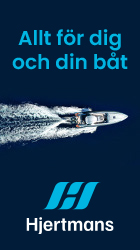Deltagarna i Volvo Ocean Race seglar under direkt hot från internationella pirater. För första gången har nu seglingsledningen avslöjat planerna på hur besättningarna och båtarna ska klara sig undan de i högsta grad aktiva piraterna när de seglar mot nästa delmål, i Abu Dhabi. Hela flottan av deltagande segelbåtar kommer att transporteras av kraftigt beväpnade fartyg från en hemlig säker hamn i Indiska Oceanen och återuppta tävlingen från en plats utmed Sharjahs kuststräcka i norra Emiraterna, med två dagars segling kvar av Leg 2 mot Abu Dhabi.
Seglingsledningen avslöjade redan i augusti att rutterna för Leg 2 och 3 skulle ritas om på grund av det ökade hotet med pirater. När båtarna står inför starten av Leg 2 på söndag från Kapstaden avslöjar Race Director Jack Lloyd planerna inför Leg 2 och Leg 3 för första gången.
De sex båtarna kommer att lämna Kapstaden enligt plan på söndag 11 december och segla normalt tills de når samlingspunkten i Indiska Oceanen. Därifrån kommer all information till allmänheten att stängas av när de seglar mot den säkra hamnen. Därifrån fraktas segelbåtarna till nästa punkt, men besättningarna ska inte färdas på segelbåtarnas transportfartyg.
När segelbåtarna har lastats kommer tävlingsledningen att bestämma var omstarten ska gå för den korta spurten in till Abu Dhabi, som står som värd för seglingarna från 31 december till 14 januari.
Systemet för poängberäkning har ändrats så att 80 procent av poängen från Leg 2 baseras på tävlingen mellan Kapstaden och den säkra hamnen och 20 procent för den återstående sträckan. För Leg 3 blir beräkningen den motsatta fram till målet i kinesiska Sanya.
För att få den högsta säkerheten för seglarna har tävlingsledningen, inklusive vd Knut Frostad, jobbat nära Dryad Maritime Intelligence, European Union Naval Force Somalia (EUNAVFOR), UK Maritime Trade Operations (UKMTO) och Maritime Security Centre, Horn of Africa (MSCHOA) såväl som den internationella seglingsorganisationen International Sailing Federation (ISAF).
– Prater är ett hot mot hela tävlingen och de åtgärder vi har vidtagit är gjorda för att seglarna, båtarna och teamen så säkra som möjligt under tävlingen, säger Knut Frostad.
Enligt statistik från Dryad Maritime Intelligence kidnappades 1 181 sjömän av pirater under 2010.
Här är resten av den senaste pressreleasen från tävlingsledningen:
Dryad’s Graeme Gibbon Brooks said pirate operations in the eastern part of the Indian Ocean had been significantly restricted.
“This factor as well as very careful planning has reduced the probability of an encounter to as low as reasonably possible,” he said. “But while the probability is small, the impact of an attack when it happens is extremely high.”
Like Abu Dhabi, Sanya is hosting the race for the first time. The Chinese tourist city in Hainan Province will open its Race Village from February 4-19.
What are the measures being taken for Legs 2 and 3?
To minimise the threat of piracy, the Volvo Ocean Race has introduced strict security measures. The first is an exclusion zone that will keep the boats from sailing into dangerous waters. The second measure will see the boats sail to an undisclosed Safe Haven Port and be loaded on to a ship that will transport them to the northern Emirates, following the safest possible route. From there, the boats will sail on to Abu Dhabi in a short sprint. For Leg 3, the procedure will be reversed. The boats will sprint out from Abu Dhabi and be loaded onto a ship heading to a Safe Haven Port. From there, the boats will sail as normal to the Leg 3 finish in Sanya, China.
Will the tracker still display information about the boats?
Full information will only be made public up to a certain point. Once the boats have reached that point, the tracker will only show Distance to Leader information. That way, the public will still know the running order of the boats but not their exact locations. The procedure will be similar for Leg 3.
Why is the race going to Abu Dhabi?
The Volvo Ocean Race is a global event and that obviously includes the Middle East. There are multiple risks involved with sailing around the world and that includes piracy. In all of these risks we have done our best to minimise any unnecessary dangers and in this case we have followed the best possible professional advice from the leading experts globally in this field. Abu Dhabi is not the problem — the piracy issue affects the other side of the Indian Ocean.
How does the scoring work?
The total number of points to be awarded is the same, but with 20 percent of the points on Leg 2 and 3 allocated to the short sprint in and out of Abu Dhabi.
Leg 2 – from Cape Town to Safe Haven 1:
1st place – 24 points; 2nd – 20; 3rd – 16; 4th – 12; 5th – 8; 6th – 4.
Leg 2 – Sprint to Abu Dhabi:
1st place – 6 points; 2nd – 5; 3rd – 4; 4th – 3; 5th – 2; 6th – 1.
Leg 3 – Sprint out from Abu Dhabi:
1st place – 6 points; 2nd – 5; 3rd – 4; 4th – 3; 5th – 2; 6th – 1.
Leg 3 – Safe Haven Port to Sanya:
1st place – 24 points; 2nd – 20; 3rd – 16; 4th – 12; 5th – 8; 6th – 4.
Can we be certain the ship transporting the boats is safe?
We are taking advice at every step to ensure we minimise risk. The ship transporting the boats will have armed guards on board, as well as armour protection, and will receive advice and situation updates from our security advisers.
How do pirates typically act in the region where the race will pass by?
Although a well-organised and lucrative business, piracy is still a crime of ‘opportunity’, according to Dryad. Pirates typically sail from the beaches of Somalia as a Pirate Action Group in previously hijacked dhows or commercial vessels known as Mother Ships and usually with a number of skiffs which are used to make the final approach carrying teams of pirates and their weapons at speed towards the target vessel. Naval forces have been able to patrol the waters of the Gulf of Aden with some success, but due to the vast nature of the Indian Ocean it is very difficult to patrol effectively particularly as pirates have extended their reach and now have the ability to operate up to 700nm from the Somalia Coast in areas such as the Indian Coast and Arabian Sea.
What do the pirates typically do then?
Once they have attacked a vessel the pirates will usually board the vessel, hijack the crew and take the vessel back to the Somali anchorages while they await responses to their requests for ransom. Ransoms have been increasing and they are known to have reached in excess of $10 million (US). The most recent released vessels endured hijackings lasting an average of 213 days.
Editors’ Notes: The Volvo Ocean Race
– The Volvo Ocean Race 2011-12 started on October 29 in Alicante, Spain and will finish in Galway, Ireland in July.
– The course of the race includes stopovers in Cape Town (South Africa), Abu Dhabi (UAE), Sanya (China), Auckland (New Zealand), Itajaí (Brazil), Miami (USA), Lisbon (Portugal) and Lorient (France).
– The first race first took place 38 years ago (as the Whitbread Round the World Race 1973-74), testing the crews against some of the most ferocious elements that man can encounter.
– The 2011-12 race takes the teams over 39,000 nautical miles (45,000 miles or 72,000 kilometres).






